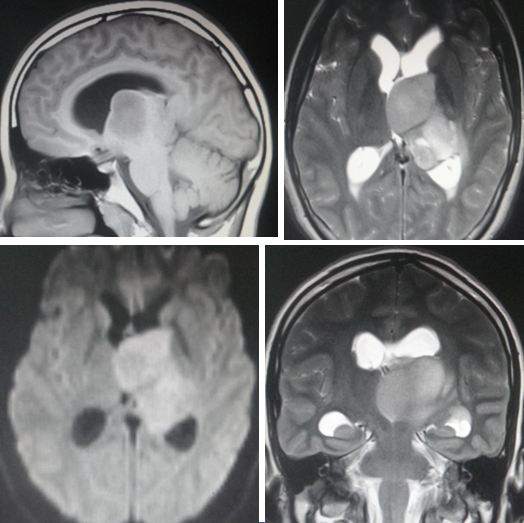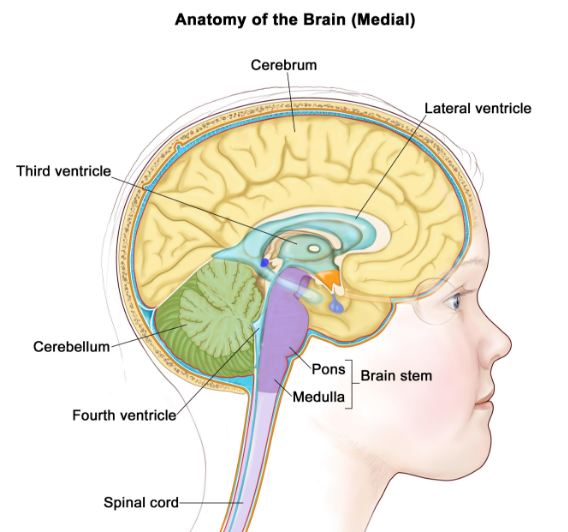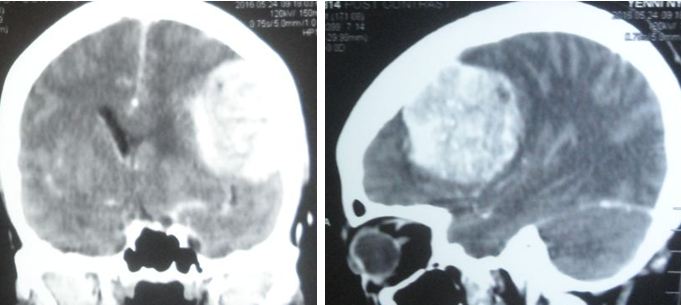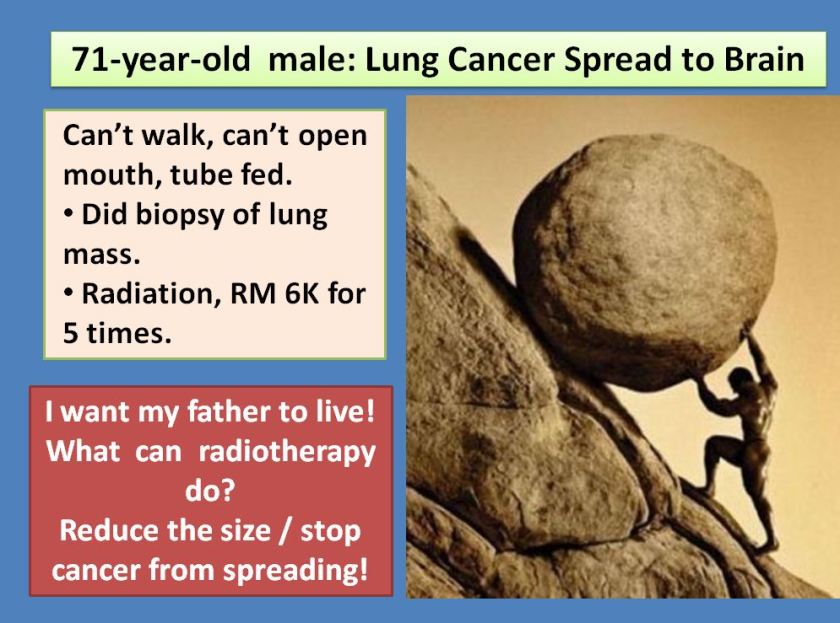Z is a 16 plus years old girl. For the past 10 years or so, she had been having sinus problems and had been on doctor’s medication. About two months ago, August 2016, she became dizzy and had pain when moving her head. She also vomited a lot. A CT scan and MRI done showed a 35 x 30 x 30 mm enhancing mass in the region of third ventricle, at or near the left foramen of Monro.
A biopsy done the next day confirmed left thalamus tumour, features consistent with a glioblastoma, WHO grade 4.
The doctor implanted a VP shunt to drain out the fluid from her brain.
According to the doctor in P Hospital, surgery is not an option. The only way out is radiotherapy. The parents were told that the treatment cannot cure her brain cancer. It may slow down the growth of the cancer but she will suffer a relapse within two years. This was not what her parent wanted. They wanted a cure.
I received a request from her family friend (who is a pharmacist) for consultation. At first Z’s father and the pharmacist came. The next day, Z’s mother and the pharmacist came. On both mornings, we discuss how to help Z. The following are my advice to them.
- There is no sensible way out of this situation. I don’t see anyone on earth being able to cure brain cancer.
- Perhaps, the family can try another doctor in another hospital. Perhaps, the surgeon there might want to suggest surgery. But this could be just a futile effort.
- Z’s mother said the family decided not to let Z undergo radiotherapy. They are afraid of the side effects. And they don’t see any purpose of radiation since it does offer any chance of a cure.
- The family wanted to try the herbs. But I made it clear to Z’s mother that herbs cannot cure her daughter’s brain cancer. Based on my experience, herbs may be able to help, and to what extend I really cannot tell or guarantee. To know more about what herbs did to our patients, click this link: https://cancercaremalaysia.com/category/brain-cancer/
I also made it clear that they should not blame us if the herbs do not help Z. Take the herbs for a week or two and at the same time take care of the diet. Let’s see what happens. If the herbs do not provide any benefit then they should consider finding other people to help.
Basic Anatomy of the Brain
The brain is divided into 3 parts:
- The hindbrain – which is the base of the skull consisting of brain stem and cerebellum.
- The midbrain – which is the small part of the brain stem that joins the hindbrain to the forebrain.
- The forebrain or cerebrum – which is the largest and most highly developed part of the brain and consists of two hemispheres which look like walnut kernel. In general, the left hemisphere controls the right side of the body and vice versa.
In a normal brain there are four ventricles (ventricle means small cavity or chamber):
- Two large right and left lateral ventricles, located on either side of the brain.
- The third and fourth ventricles are placed along the midline.
Within each ventricle is a network or blood vessels knows the choroid plexus. This is where the cerebrospinal fluid (CSF) is produced. The CSF is a clear, colourless fluid. Any change in this can indicate disease.
The CSF fills the ventricles and the surrounding space of the brain and spinal cord where it acts as a protective buffer from injury. and transports nutrients and waste.
The ventricles produce approximately glassful of CSF every day, continuously replacing it as it’s absorbed. Under normal conditions, a delicate balance exists between the amount of CSF produced and the rate at which it is absorbed.
The fluid flows from the ventricles as it bathes and cushions the brain and spinal cord.
The third ventricle is a narrow cavity that is located between the two halves of the brain. CSF flows into the third ventricle through openings in its roof called the foramen of Monroe. The two foramen of Monroe are connected to the left and right lateral ventricles above. The third ventricle is connected to the fourth ventricle below by the cerebral aqueduct (canal) of Sylvius, which passes through the midbrain.
If the channel through which this fluid flows is blocked then fluid accumulates in the brain. Hydrocephalus is a medical term that refers to an abnormal accumulation of CSF within cavities inside the brain called ventricles.
Blockage of cerebrospinal fluid (CSF)
A ventriculoperitoneal (VP) shunt is a medical device that relieves pressure on the brain caused by fluid accumulation. Patients with hydrocephalus need to undergo a surgical procedure called VP shunting. Doctors surgically place VP shunts inside one of the brain’s ventricles to divert fluid away from the brain and restore normal flow and absorption of CSF.
Cysts, tumors, or inflammation in the brain can impede the normal flow of CSF and create an unsafe accumulation.
Risks of VP Shunting
Placement of a shunt is a very safe procedure. However, complications can occur during or after the procedure. Risks associated with any surgical procedure include excessive bleeding and infection. You might also experience adverse reactions to anesthesia, such as breathing difficulties, changes in heart rate, or changes in blood pressure levels.
There are rare risks specific to VP shunting that can be serious and potentially life-threatening if left untreated, including:
- infection in the shunt or brain.
- blood clots
- bleeding in the brain
- damage to brain tissue
- swelling of the brain
- Fever, headache, abdominal pain, fatigue, and a spike in blood pressure levels can indicate an infection or a malfunction of the shunt.
Symptoms of brain tumour
- An epileptic seizure.
- Muscle weakness or lack of co-ordination.
- Increasing drowsiness.
- Loss of balance.
- Loss of certain vision field.
- Headache and vomiting.
Sources:
http://www.yoursurgery.com/ProcedureDetails.cfm?Proc=44
http://www.hydroassoc.org/brain-physiology-relevant-to-hydrocephalus/
http://www.healthline.com/human-body-maps/third-ventricle
http://www.upright-health.com/third-ventricle.html
http://www.healthline.com/health/ventriculoperitoneal-shunt#Recovery4




















You must be logged in to post a comment.